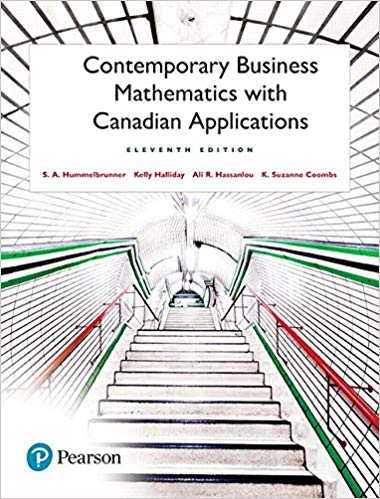The primary objective of the text is to increase the student’s knowledge and skill in the solution of practical financial and operational problems encountered in operating a business. Contemporary Business Mathematics with Canadian Applications is a teaching text using problem-identification and problem-solving approaches. The systematic and sequential development of the material is illustrated by examples that show a step-by-step approach to solving the problem. The detailed solutions are presented in a visually clear and colourful layout that allows learners to monitor their own progress in the classroom or in independent study. Note: If you are purchasing an electronic version, MyMathLab does not come automatically packaged with it.
چکیده فارسی
هدف اصلی متن افزایش دانش و مهارت دانش آموز در حل مشکلات عملی مالی و عملیاتی است که در راه اندازی یک تجارت با آن مواجه می شوند. ریاضیات کسبوکار معاصر با برنامههای کاربردی کانادا یک متن آموزشی با استفاده از روشهای شناسایی مسئله و حل مسئله است. توسعه سیستماتیک و متوالی مطالب با مثال هایی نشان داده شده است که رویکرد گام به گام برای حل مسئله را نشان می دهد. راه حل های دقیق در یک طرح بصری واضح و رنگارنگ ارائه شده است که به زبان آموزان اجازه می دهد تا پیشرفت خود را در کلاس درس یا مطالعه مستقل نظارت کنند. توجه: اگر نسخه الکترونیکی خریداری میکنید، MyMathLab بهطور خودکار با آن بستهبندی نمیشود.
ادامه ...
بستن ...
Ebook details:
عنوان: Contemporary Business Mathematics with Canadian Applications Plus MyLab Math with Pearson eText -- Access Card Package (11th Edition)
نویسنده: S. A. Hummelbrunner and Kelly Halliday
ناشر: Pearson Canada (2017)
زبان: English
شابک: 0134568389, 978-0134568386
حجم: 213 Mb
فرمت: Image pdf with ocr
ادامه ...
بستن ...










